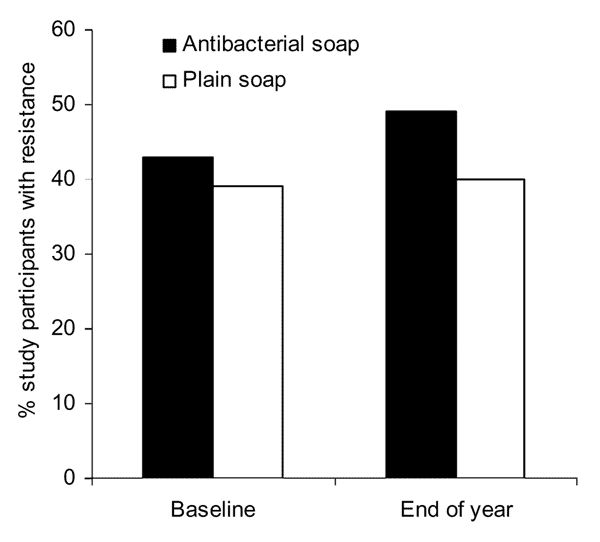Volume 11, Number 10—October 2005
Research
Antibacterial Cleaning Products and Drug Resistance
Figure 2

Figure 2. Proportion of study participants with >1 bacterial species resistant to an antimicrobial agent on their hands. In the group that used antibacterial products, 82 and 105 hand samples were available at baseline and at year-end, respectively. In the group that used nonantibacterial products (i.e., plain soap), 82 and 96 hand samples were available at baseline and at year-end, respectively.
Page created: February 21, 2012
Page updated: February 21, 2012
Page reviewed: February 21, 2012
The conclusions, findings, and opinions expressed by authors contributing to this journal do not necessarily reflect the official position of the U.S. Department of Health and Human Services, the Public Health Service, the Centers for Disease Control and Prevention, or the authors' affiliated institutions. Use of trade names is for identification only and does not imply endorsement by any of the groups named above.